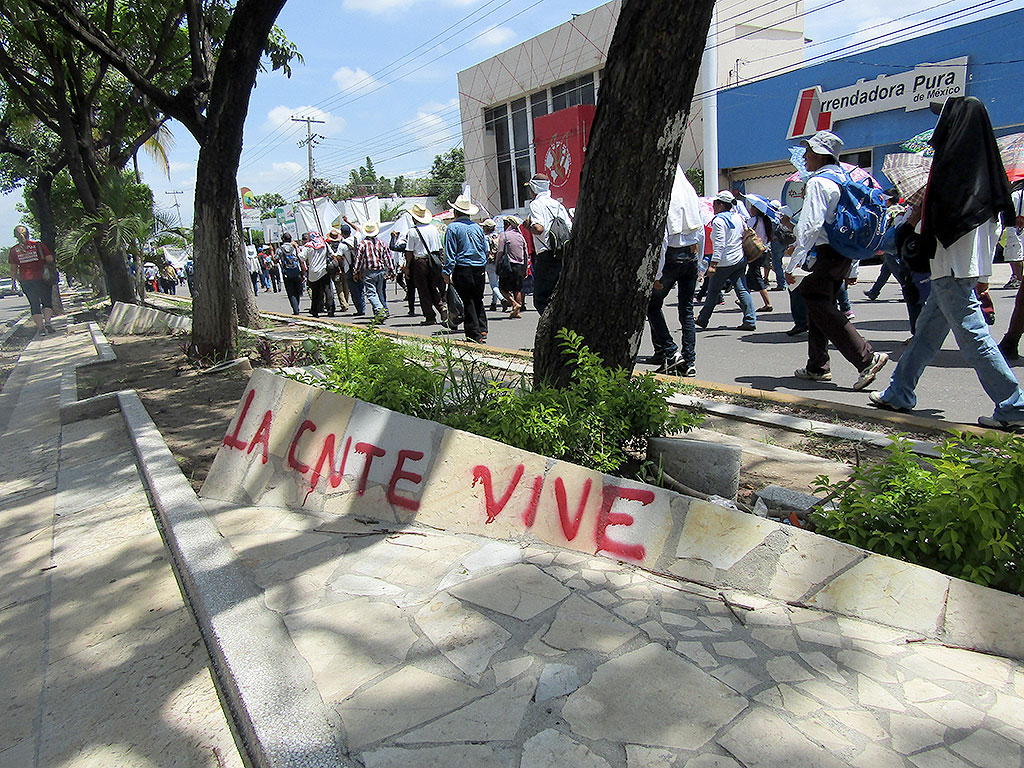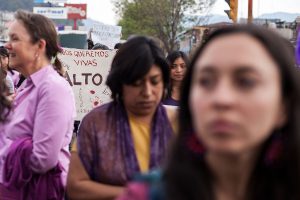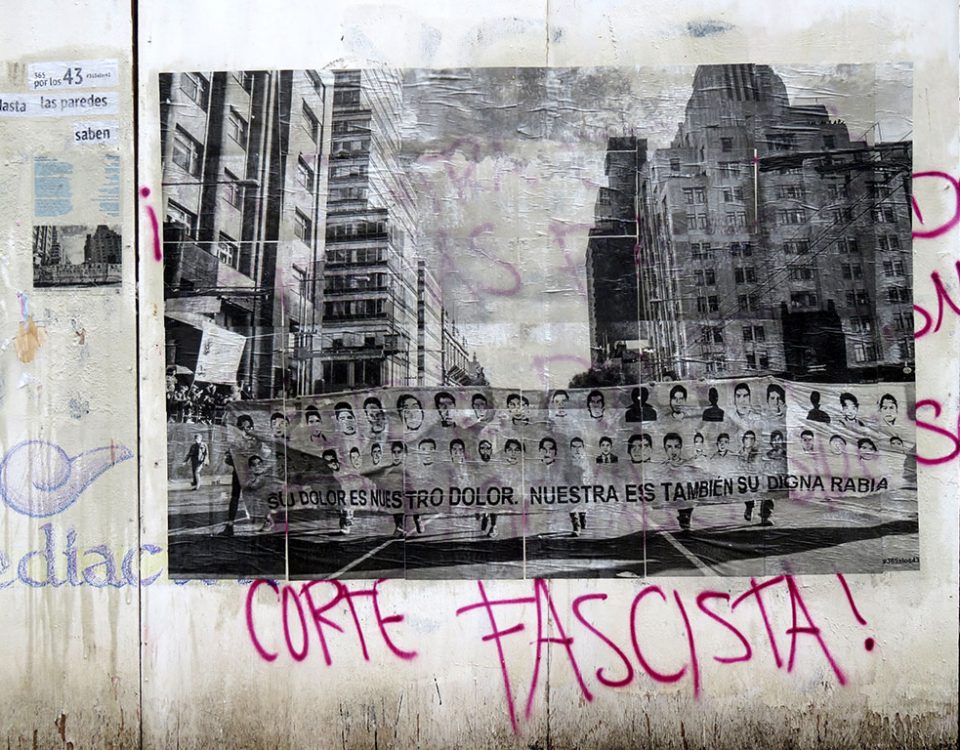
SIPAZ ACTIVITIES (early April to late June, 2016)
25/08/2016
FOCUS: Education Reform and the Teachers’ Struggle – Keys to Understanding the Mobilizations
25/08/2016Thousands of women, together in the streets, purple clothes, banners, and slogans everywhere. Meetings, musical concerts, performances, and workshops. All that and much more took place on April 24, when contingents of women mobilized in about 40 cities of the Mexican Republic following a massive call on social networks. The goal, to visibilize, question, and denounce different forms of male and sexist violence women live through daily in a country where, according to the United Nations Organization (UN), seven women are killed every day.

Women shouting slogans during the mobilization against sexist attacks on April 24 in San Cristobal de Las Casas, Chiapas © Aarón Cadena Ovalle
Also known as Purple Spring or #24A, this day of demonstrations denounced everything from the more subtle forms of violence -which frequently are not perceived as such- such as a lewd greeting in the street, to their most extreme examples such as femicides. Between these two, a wide range of manifestations: street harassment, objectification of women’s bodies in the media and advertising, stereotypes in soap operas and movies, gynecological and obstetric violence such as sterilizations or inhuman treatment during pregnancy and childbirth, the criminalization of women who abort, discrimination against non-heterosexual people, hatred of feminists, transphobia, sexual assault or rape, followed by a long etcetera. Due to this, posters and chants such as “We want us alive”, “I don’t want your compliment, I want your respect,” “We don’t want flowers, we want rights”, or “If they touch one of us, we will all respond” were frequent.
Some media outlets recognized this mass mobilization as the greatest manifestation of women in the history of Mexico. And the fact is that this public intervention brought a great diversity of women from collectives, organizations, or individually; both feminists and non-feminists; different feminisms; from various political perspectives; various sexual orientations; such as as transsexuals, intersexuals, transgender, and men.
#MiPrimerAcoso (#MyFirstHarassment)
Parallel to the marches in the streets, an action took place on Twitter and Facebook social networks in which thousands of women shared unpleasant experiences of harassment that they have experienced. Using the #MiPrimerAcoso hashtag, they described what their first aggression was like, who the aggressor had been, where it had happened, and how they felt after being violated.
“It was when I was eight years old, my ‘uncle’ […] used to expose himself to me, until finally he ended up sexually abusing me, he’d said he was going to teach me so that when I grew up I’d know.”
“I was ten. […] I was giving peanuts to squirrels when a man stood in front of me and dropped his pants to show me his erect penis.”
“I was taking my first subway ride alone, […] and a man decided to masturbate rubbing his penis with my shoulder […] I was 11.”

Women and men carrying banners with slogans during the march on April 24 in San Cristobal de Las Casas, Chiapas © Aarón Cadena Ovalle
At the end of the day were 183,000 testimonies of harassment published, making #MiPrimerAcoso a trending topic -the most repeated word or phrase on Twitter in a set time period- and extending across several countries. If this action did not result in significant changes, it did allow an approach to a social problem of which little is investigated in Mexico. An analysis of the tweets published in Distintas Latitudes (Different latitudes) revealed that the first harassment of women usually occurs while they are still minors, mostly between six and 11 years of age. At this age, it is rare that girls understand the aggressions as forms of harassment and consequently, they are rarely reported. “It took me many years to realize what had happened and many more to realize that I am not an object. I spent most of my life in silence and solitude.” Many women expressed feeling guilt, shame, or humiliation after the attacks, so that they kept them secret: “I didn’t say anything to anyone because I was embarrassed, I felt humiliated and I feared that my mom would never let me go out again unsupervised “.
According to the same study, harassment occurs in a variety of places. In 47% of reported cases, it occurred in the street, indicating that it is not an exclusive problem of public space, but that it also occurs in supposedly safe environments, such as women’s and girls’ own homes. “Violence is not only out there, violence is also at home with the people who are responsible for looking after us”, said one woman. It was common that they said that several witnesses were present during the attacks but did nothing to stop them, whether passersby on the streets, commuters on public transport, or relatives in the homes.
This action on social networks made the frequency of assaults that women live through visible, making it clear that the harassment they shared was their first experience, but not the only one. “If I talk about all the cases, I won’t finish. They are infinite”, one woman posted. The same study showed that four out of ten reported cases were not sexual harassment but abuse, which is considered a criminal offense and, therefore, can be reported. According to the Executive Committee for Attention to Victims, 99% of sexual crimes committed in Mexico remain in impunity. The fact is that harassment is such an everyday situation that it becomes “normal”.

Women and men carrying banners with slogans during the march on April 24 in San Cristobal de Las Casas, Chiapas © Aarón Cadena Ovalle
So, What Next?
After the mass mobilization in the streets and on social networks, the big question is, what next? What continuity will these actions have? Will the demands shouted by thousands of voices be met? Will there be consequences for the abusers denounced in the testimonies of the women? Will the marches result in some organized process beyond a surge of euphoria? Or will everything return intact to the daily occurrence of sexist aggression?




